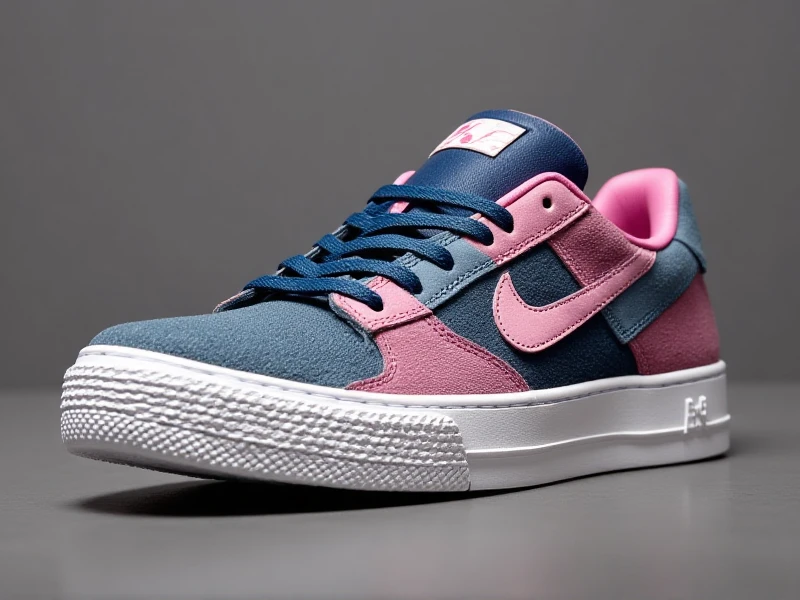Your Ultimate Guide to Men's Shoes: Styles, Care & Buying Tips
2025-06-02

In the world of men's style, few items hold as much power as the right pair of men's shoes. They instantly project professionalism, ruggedness, cool confidence, or effortless weekend ease. Choosing the perfect pair isn't just about covering feet; it's about grounding your entire look and making a subtle, yet significant, statement. Let's explore the essential categories, styling insights, and care tips to elevate your footwear game.
Essential Styles Every Man Should Know:
1. Dress Shoes (The Foundation of Formality):
Oxfords: The undisputed king of formal men's shoes. Characterized by a closed lacing system (the eyelet tabs are sewn under the vamp), offering a sleek, minimalist profile. Made from polished leather, they're essential for black-tie events, serious business meetings, and weddings. Choose classic black or rich brown.
Derbies (Bluchers): Similar austerity to Oxfords but with open lacing (eyelets sewn on top of the vamp). This makes them slightly less formal and often more versatile. Excellent for business casual environments or making a polished statement without being stuffy. Brogues (shoes with decorative perforations) often come in Derby form.
Loafers: Slip-on sophistication. Achieve a range of styles:
Penny Loafer: Iconic with its strap and diamond-shaped cutout. Smart casual royalty.
Tassel Loafer: Features dangling tassels – a touch of flair, best for business casual or sharp weekend wear.
Bit Loafer: Defined by a metal strip or "bit" across the vamp – sharp and luxurious.
Monk Straps: Offer a unique alternative to lacing, featuring one or two buckle straps. Single monks bridge formal and casual; double monks make a bolder style statement.
2. Boots (Versatility Meets Durability):
Chelsea Boots: Effortlessly cool and timeless. Defined by elastic side panels and an ankle height. Ideal for both smart trousers and rolled-up jeans. Suede options are particularly popular for casual looks.
Chukka Boots: Ankle-high, usually featuring two or three eyelets. Originally desert boots (often suede with crepe soles), now available in leather and various sole types. Perfect smart casual staples.
Work Boots (e.g., Iron Rangers, Moc Toe): Heritage styles built for durability but embraced for their rugged aesthetic. Thick soles, quality leather, iconic silhouettes. Great with jeans or chinos for an authentic vibe.
Dress Boots: Sleeker, less bulky boots, often in polished leather, capable of replacing oxfords or derbies for cold-weather formal needs.
3. Casual & Sneaker Styles (Everyday Comfort & Modern Flair):
Sneakers: This vast category ranges from performance brands (Nike, Adidas) to minimalist leather options (Common Projects, Axel Arigato) and chunky "dad" sneakers. Canvas options like Converse or Vans offer classic casual cool.
Moccasins: Unstructured, supremely comfortable slip-ons, often made of soft suede or nubuck. Ideal for relaxed weekends and warm weather by the boat or beach club. Boat shoes (a subset) add functional treads and laces.
Espadrilles (Summer Essential): Canvas or linen uppers with distinctive jute rope soles. The ultimate warm-weather casual shoe, perfect with shorts or linen pants.
Key Buying Considerations
Selecting the right men's shoes involves more than just liking the look:
1. Fit is Paramount: Sizing systems vary. Prioritize trying them on in-store whenever possible. Walk around! Check toe room, width, heel slip prevention, and overall arch support. Socks matter (wear the ones you intend to with those shoes).
2. Purpose & Occasion: Be realistic about where they'll be worn. Buying hiking boots for a city commute, or overly casual sneakers for frequent client meetings, is a recipe for disappointment. Match the formality level.
3. Material Matters:
Leather: Classic, durable, ages beautifully, breathes well. Polished or full-grain for dress; suede or nubuck for texture.
Suede/Nubuck: Luxurious feel but more weather-sensitive. Requires protectant.
Canvas/Fabric: Casual, lightweight, affordable, but less durable/replaceable than leather.
Synthetics: Generally budget-friendly but often less breathable and durable.
4. Comfort & Support: Don't sacrifice comfort entirely for style. Consider the sole cushioning, arch support, and weight. Quality insoles can often upgrade comfort significantly.
5. Quality Craftsmanship: Especially for investment pieces like dress shoes or boots, look for glued sewn construction (Goodyear welted is the gold standard for durability and rebuildability).
Caring for Your Investment
Quality men's shoes deserve maintenance to look great and last longer:
1. Rotate: Avoid wearing the same pair consecutively. Give the insoles time to dry out and the leather time to rest.
2. Protect: Apply waterproofing spray before wear, especially for suede and nubuck.
3. Clean: Brush off dirt frequently. Use dedicated cleaners for different materials (leather conditioner, suede eraser/brush). Remove salt stains immediately in winter.
4. Shoe Trees: Insert cedar shoe trees after wearing. They absorb moisture, maintain shape, and reduce odor. Essential for leather footwear.
5. Sole Replacement: For welted shoes/resoleable boots, replacing worn outsoles extends their life for years.
Finding Your Perfect Pair requires understanding the options, knowing your needs, and respecting fit. The market for men's shoes offers incredible depth, from timeless classics to cutting-edge designs. Prioritize versatility for your core styles – a great dark brown leather derby, a sleek pair of Chelsea boots, and classic white leather sneakers form an incredibly strong foundation. Build your collection consciously, care for them well, and your shoes will become not just functional items, but cherished elements of your individual style journey. What's your most essential pair of men's shoes? Share below!
Category: